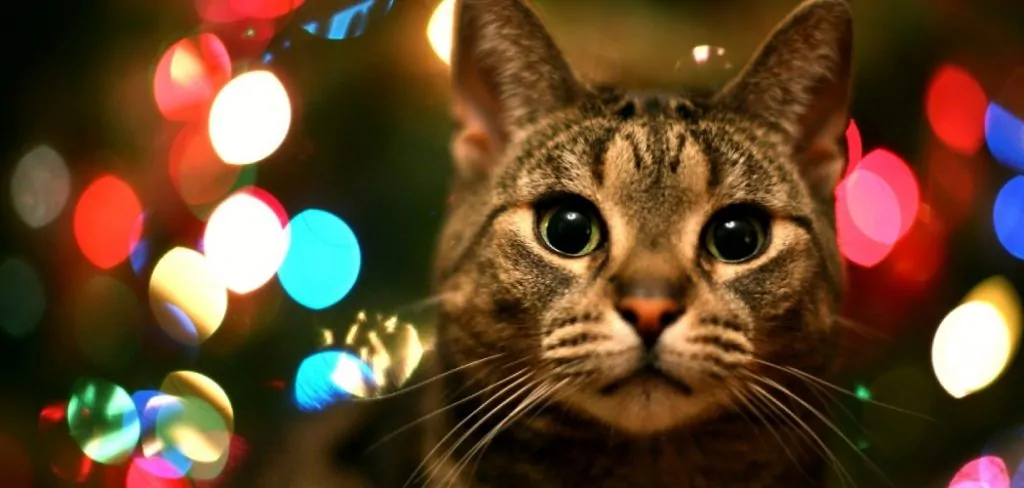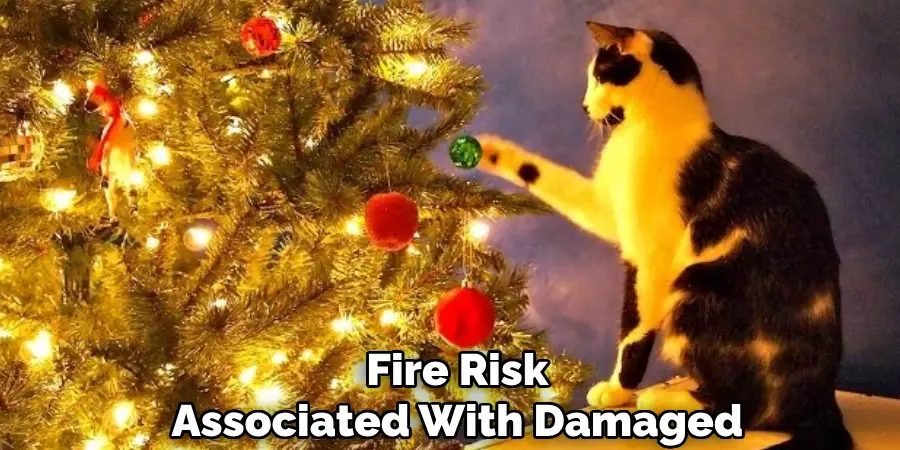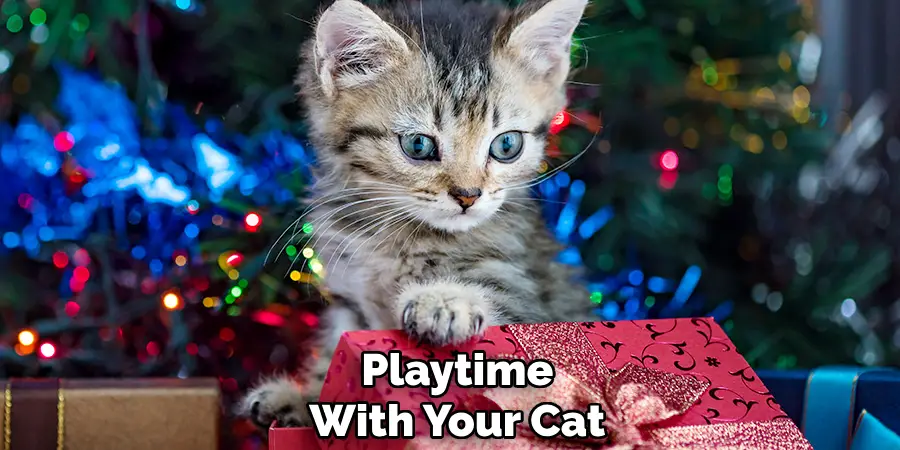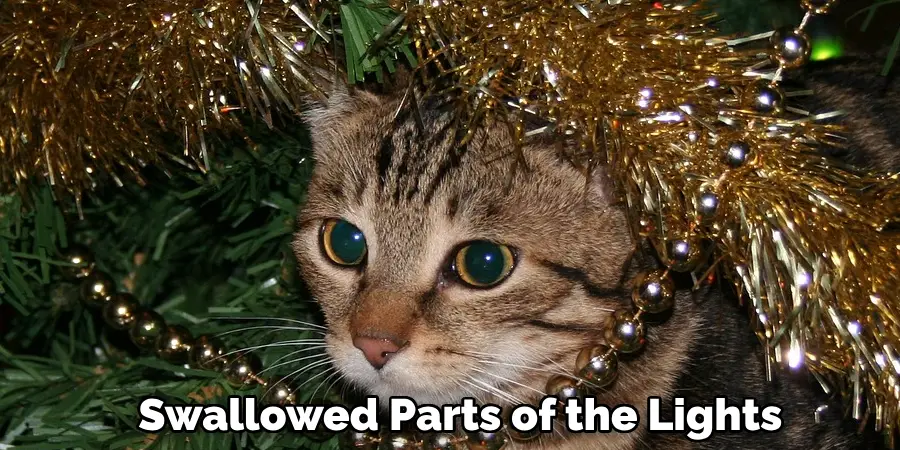Cats are naturally curious creatures, often drawn to the shimmering allure of Christmas lights. However, this fascination can lead to potentially dangerous scenarios, as cats may try to chew on the lights. The risks associated with such behavior are significant, including electrical shocks, burns, and even the potential for fires if the wires are damaged.

The issue of how to keep cats from chewing Christmas lights is a common concern during the festive season. This article aims to address these challenges by offering a variety of practical tips and methods. By implementing these strategies, pet owners can balance maintaining the festive spirit of their decorations and ensuring the safety of their feline companions. Through preventative measures, training, and supervision, it is possible to adorn your home with beautiful lights without compromising the safety or well-being of your curious cat.
Understanding Why Cats Chew on Christmas Lights
Cats are instinctively curious creatures, and the twinkling lights and dangling wires of Christmas decorations can be irresistible to them, resembling toys or even prey. This curiosity and their playful nature often lead cats to bat at or chew on string-like objects. Their natural hunting instincts drive this behavior, as they find joy in interacting with objects that mimic the movements of their prey. Additionally, kittens may chew on items, including Christmas lights, during their teething process, seeking relief for their growing teeth.
For adult cats, boredom can lead to chewing as a form of oral stimulation, an outlet for their energy when they lack sufficient entertainment. Some cats are drawn specifically to the rubbery texture of cords, which may also hold a certain appeal as a soft material to bite. The movement and reflection of light from certain fixtures can mimic the movements of prey, further enticing cats to pounce or bite at the lights. Understanding these behaviors helps pet owners take targeted steps to counteract and prevent these risky interactions, ensuring their cats’ safety and the integrity of their holiday decorations.
Safety Concerns with Cats and Christmas Lights
When managing Christmas lights in a home with cats, the risk of electrical shocks is a serious concern. If a cat bites through the wiring, even low-voltage lights can deliver a jolt strong enough to cause burns or other injuries. While it may seem unlikely, the delicate nature of holiday light wiring makes accidental shocks a plausible hazard, capable of significantly harming your feline friend. Equally concerning is the risk of ingestion.
Cats that chew on lights may accidentally swallow pieces of plastic or wires, which can lead to dangerous blockages or internal injuries, requiring immediate veterinary attention. Additionally, the fire risk associated with damaged wires cannot be underestimated. Should a cat’s play lead to exposed or frayed wires, there exists the potential for a short circuit that could ignite nearby flammable materials, causing a fire. Lastly, if a cat consistently interacts with Christmas lights without intervention, they may start to perceive them as toys.
This behavior not only increases the likelihood of the dangers above but also disrupts the intended festive ambiance. Therefore, implementing preventative strategies not only preserves the beauty of the holiday display but, importantly, safeguards your pet’s well-being.

How to Keep Cats from Chewing Christmas Lights: Preventive Measures
Ensuring your cat’s safety and the integrity of your Christmas lights begins with employing effective preventive measures. Here are some practical tips to cat-proof your holiday decorations:
Using Cat Repellents
Apply pet-safe sprays with bitter or citrus flavors directly to the lights, making them unappealing for your cat to chew on. Consider using commercial repellents specifically designed for deterring pets, or create your own solution by diluting vinegar or lemon juice in water.
Elevating and Securing the Lights
Keep your lights out of reach by placing them high up on the Christmas tree, avoiding the lower branches where cats can easily reach. Similarly, when decorating around windows or furniture, run lights at a higher level, creating a buffer zone between the ground and the first row of lights.
Protecting Cords with Cord Covers
Use protective tubing or cord covers designed to prevent pets from accessing electrical wires. Install these covers along the length of the wire to block access and deter chewing, ensuring your lights remain fully functional.
Use Battery-Powered Lights
Consider replacing traditional plug-in lights with battery-operated alternatives, which are typically safer due to their lower voltage. Place the battery pack out of reach or hide it behind sturdy objects to keep it away from curious paws.
Distracting Your Cat with Toys
Provide your cat with plenty of alternative entertainment, such as chew toys, puzzle feeders, or interactive toys. Playtime with your cat can help release its energy and reduce its interest in the Christmas lights, ensuring it remains safe during the festive season.

Creating a Safe Christmas Environment for Cats
Creating a festive holiday setting while ensuring your cat’s safety can be achieved with a few thoughtful adjustments. One effective way is to choose cat-friendly alternatives to traditional lights.
Consider using fiber optic decorations or LED projectors instead of string lights; these provide beautiful, twinkling effects without the tempting wires that attract playful cats. When decorating your tree, select options that minimize risks. Opt for a heavy, wide-based Christmas tree as it lowers the likelihood of being toppled if a cat decides to climb. Additionally, securing the tree with wire or string to a wall or ceiling can add extra stability.
For ornaments, use non-breakable, shatterproof varieties at lower levels on the tree to reduce the chances of accidents should your cat become curious. Soft or fabric-based decorations, especially those within reach of your feline friend, are ideal to prevent injury. By choosing your decor carefully and making these practical adjustments, you can maintain the festive spirit without compromising your cat’s safety or peace of mind.
Training Your Cat to Avoid Christmas Lights
Implementing positive reinforcement training can be effective for ensuring that your feline friend steers clear of holiday hazards, such as Christmas lights. Start by rewarding your cat with treats and praise whenever they desire to stay away from the Christmas tree and lights. Redirect their attention by engaging them with appropriate toys, gradually reinforcing the idea that these alternatives are more rewarding.
For those looking for a structured approach, clicker training can be an excellent method to train your cat to avoid specific areas. Begin by associating the click sound with a treat, then click whenever your cat steers clear of the lights and reward them immediately. Over time, your cat will learn to associate the tree and lights with not receiving a reward and will avoid them.
Additionally, employing deterrents can further discourage curiosity. Place aluminum foil or double-sided tape around areas like the tree skirt or outlet where your cat tends to investigate, as cats generally dislike these textures. Motion-activated pet deterrents can also help; these devices release a harmless air spray when your cat nears the lights, startling them just enough to reconsider approaching. You can maintain your holiday decor’s beauty through these combined training techniques while prioritizing your cat’s safety.

Supervision and Monitoring
Supervising Your Cat Around Decorations
The moment you introduce Christmas decorations into your home, it’s crucial to supervise your cat closely. Initial behaviors can indicate potential risks, such as chewing or excessive interest in the lights. Keep a watchful eye on your feline friend to catch these early warning signs, allowing you to intervene promptly. Familiarize yourself with their usual patterns and look for deviations, which can indicate a growing curiosity about the decorations.
Using Cameras or Monitors
When you’re not at home, pet cameras or monitors can be invaluable tools for supervision. These devices enable you to watch your cat remotely, providing insights into any problematic behaviors you might not witness in person. If your cat begins to exhibit risky patterns, such as attempting to play with or eat the lights, you can adjust your strategies accordingly. This technology helps ensure your holiday decorations remain safe, reducing the stress of being away from home.
Emergency Actions if Your Cat Chews on Lights
What to Do if Your Cat is Shocked
Prompt action is crucial if you suspect your cat has been shocked by chewing on Christmas lights. Immediately turn off the power to prevent further harm. Carefully check your cat for signs of burns, labored breathing, or any unusual behavior, which are indicators of electrical shock. Seek veterinary attention right away to ensure they receive the necessary care and treatment.
Signs of Ingestion
If your cat has swallowed parts of the lights or wires, spotting the symptoms of ingestion is essential. Look for signs such as vomiting, difficulty eating, or general lethargy. These can indicate a blockage or internal damage caused by swallowed wires. Contact your veterinarian immediately for guidance, as professional intervention may be necessary to address these potentially dangerous situations and ensure your cat’s health and safety.

Conclusion
Ensuring the safety of your furry companions through cat-proofing Christmas lights is crucial in maintaining a harmonious household during the festive season. By understanding how to keep cats from chewing Christmas lights, you protect your beloved pets and prevent potential hazards to your home. Employing a strategic mix of repellents, protective measures, and enjoyable distractions is essential.
These techniques deter the curious behavior of cats and introduce new ways to engage their playful nature without risk. Remember, supervision remains key—dedicate time to watch over your cats as they explore the newly adorned space. Proactively opting for cat-safe decorations and maintaining a vigilant eye on your feline friend’s behavior will create a stress-free holiday environment. By prioritizing safety with these methods, you can enjoy the festive season worry-free, providing a safe and joyful atmosphere for both you and your cat.

